All trip but no arrival. Wait! That is not quite right. There is a charming end.
Toufic wanders around Beirut by night, leaving work at an internet café to got to a party where he hopes to meet Yasmina. He stops home to change clothes (one grungy tee-shirt for another) where he has a loving mother and a younger brother who worships him and a father who provides well for them all. All perfectly Main Street. On the way, while fuelling his moped he sees in the middle distance a kidnapping, from which he averts his eyes once he (and the viewer) realises what is happening. He crosses the city, past the neon lights, the lines of sedans at traffic lights, fast food joints, bars. Buses with workers going home. It could be a city anywhere. Note it is all set at night and so many of the images are dark, very dark.

At the party in a private apartment the misadventures begin when one of his buddies flies into a jealous rage and has to be placated. There is an argument in the parking lot over a dented fender. One of the antagonist deliberately batters his moped.
Testosterone now rising, the mild mannered Tou seeks out a weapon with which to deal with this malefactor. He travels on the damaged moped along the famous Corniche around the bay. He encounters a friendly garage owner who helps out with the moped, an officious paramilitary policeman who is heavily armed for a traffic cop, an arms dealer who pines for the good old days when the private armies bought big-time, some unpleasant goons, while his buddy, now back to normal, seeks him out to stop him doing anything stupid.
There is much back and forth and in the end Tou, though he now has a weapon, goes home and plays with his younger brother, and the two of them fall asleep. The End.
While the story in the foreground is a staple ‘what Toc did last night’ it is placed in the context of street kidnappings, trigger happy cops, and psychotic merchants of death. It was made fifteen years after the last war fought in Lebanon and about four years before the next one, a time of relative calm and normality. These twenty somethings lust after one another, dance to the latest European craze, talk of American block buster movies, the girls strut their stuff, and the lads admire it up close. They speak Arabic but act like Europeans in every way. See, normal. Yet just a few feet outside the bubble are the guns, kidnappers, paramilitary thugs, and street gangs looking for easy meat. There are few words of French with some visitors.
 Writer and director Michel Kammoun
Writer and director Michel Kammoun
It had a surprisingly good but superficial and mostly descriptive review in ‘Variety’ I found on the IMDB.
I recorded it from SBS because of its origin in Lebanon at a time of (relative) normality.
Month: January 2015
‘Meeting the Demands of Reason: The Life and Thought of Andrei Sakharov’ (2009) by Jay Bergman
Andrei Sakharov designed and built hydrogen bombs for the Soviet Union in the 1950s and 1960s. He also dissented from the regime during much of that time until he became a full-time dissident in the latter 1960s. I have wondered how he compared to Robert Oppenheimer and this is a start in finding out. Strangely enough Sakharov loomed larger on my horizon than Oppenheimer because Sakharov was a celebrity dissident in the 1960s, repeatedly in ‘Time’ magazine and in the highbrow publications of the Centre for Democratic Institution from which I drank at the time, whereas Oppenheimer was a man of the past.
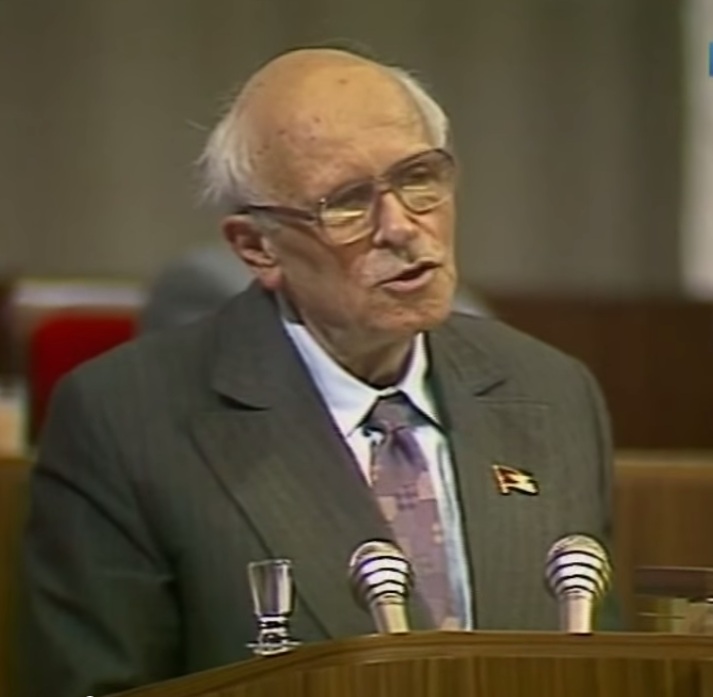 Andrei Sakharov, 1989
Andrei Sakharov, 1989
Sakharov was man and boy Soviet, knowing no other way of life like the millions of others. His family was secure and comfortable by the standards of the time and place, though Stalin’s purges and the myriad of local purges that cascaded onward in time caught up with members of his family, first among the older generation of uncles, and then aunts whose crime was to have married that uncle, and then Sakharov’s generation, an arrest here, a deportation there. Even so his loyalty to the regime was unalloyed.
He grew up in a musical family, while his father was a successful physics teacher who wrote and published numerous approved high school texts on the subject. Sakharov’s interest in and aptitude for mathematics blossomed and he went to the head of the class and stayed there. Having just seen ‘The Imitation Game’ (reviewed elsewhere on this blog) I compared him to Alan Turing.
He failed the physical examination for the Soviet army in World War II; consider for a moment how low that standard must have been. He had an irregular heart beat most of his life. Instead he signed up to work in an ordinance factory. There his capacity to reduce confused and confusing reality to rows of numbers led him to several innovations which made his name as a coming man.
One example suffices. To test artillery shells for defects the method was manual, in every new batch several shells were dusted and examined with a magnifying glass for cracks in the casing. Until that test was passed the batch waited. If one crack was found the whole batch was rejected. Neither effective nor efficient. Sakharov devised a laser to pass over each shell individually and ping on cracks so that individual shells could be rejected but not whole batches and the production line kept moving the whole time. I have take quite a few liberties in this description to make it accessible; as they say in movie credits, ‘based on a true story.’ In the same spirit that could be motto for Fox News rather than that ironic statement ‘Fair and Factual.’ It is ironic isn’t it?
There is one of similarity to Turing. Both turned to automation for tasks that previously had been done by hand, just as the machine gun replaced the bolt action rifle.
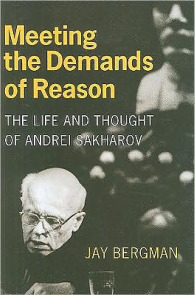
Sakharov’s change from cog in the mighty wheel to dissident came slowly. He saw neighbours and colleagues foully treated and it could not all be explained by the war. Jews were made victim. A loose word about comrade number one, and … Exactly, no one quite knew.
Moreover, when he left the laboratory for the factory and later the weapons plants, which were really cities in themselves, he saw how badly treated workers and their families were, despite the endless rhetoric of the workers paradise. Also he choked on the ritualistic evocation of Marxism-Leninism at every official juncture. Just as many of us have choked on the empty and ritualistic evocation of God on public occasions like the Gallipoli ceremony.
He was a brilliant scientist, a claim reiterated many times in these pages without a satisfactory explanation of this brilliance or how it was recognised as brilliance by all the dimwits around him. Well, they have to be dimwits if they did not reject the regime per Bergman.
Gradually, Sakharov tried to use the status he had to help individuals and in time he realised that the Stalinist regime was the problem, and that it rolled on even after its creator died. He retained a faith in the Soviet promise but thought it perverted by Stalin. At first his supposition was that the Tsar did not know, in the old Russian proverb, only slowly concluding that the Tsar was the problem, then Tsarism including the people who wanted a Tsar, call them the Tsarists.
Though his interventions were few, carefully judged to appeal to Soviet values, and argued on pragmatic grounds they yielded a vigorous reaction. He was named as errant in public by Chairman Khrushchev himself.
In time he realised there were systematic and systemic failings and those he saw first and most clearly and which he quantified were the deaths and defects causes by the radiation of atmospheric testing of hydrogen weapons. He compiled spreadsheets of data that showed approximately 10,000 deaths caused over three generations by the radiation released in a single atmospheric test. He thus argued for underground testings, which had technical limitations, in his immediate environment, then at closed and secret scientific conferences, and then by writing to the Party Chairman.
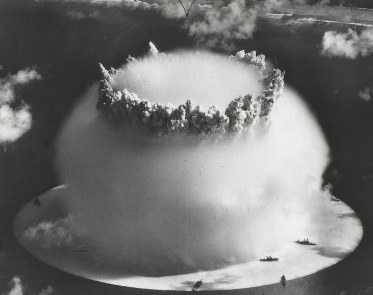
Yikes, this drumbeat was readily characterised as unpatriotic, just as Edward Teller tried to portray all other others who lacked his one-eyed enthusiasm for ever bigger bombs as UnAmerican.
His ground shifted from urging reforms on pragmatic grounds to improve Soviet society to urging reforms because they were morally right. This put him beyond the pale; it put him in Groky four hundred miles east of Moscow.
There is a personal element as well. Sakharov saw and despaired at medical treatment his first wife Klava received. Doctors at elite clinics could not interpret X-Rays to his mind. She died in a great pain as he watched. Perhaps it could happen anywhere but it happened to him and it was another fissure in his allegiance to the Soviet Union.
One of the things that tied Sakharov to the Soviet regime withal his objections was the need for weapons not because of the Cold War with the West but because of Mao’s China and its erratic course as perceived from Moscow. That was a new perspective to me.
One of the things that loosened the tie to the Soviet regime was the Prague Spring of 1968. We read that many Soviet dissidents saw in those Czechoslovakian changes a hopeful future for the Soviet Union itself. When that door slammed shut in August 1968, those Soviet dissidents who championed reform from within communism lost hope. It was proof that communism could not change. This was another new perspective to me and a striking one due to our recent visit to Prague and our tours of its communist relics.
The many and varied dissidents could not agree among themselves and spent at least as much time and effort in undermining each other as working for reform of the Soviet way. (Sounds familiar to any seasoned committeeman.) They tried to organise themselves in the way they knew, a central committee with a rigid hierarchy….and that did not work. All of this backbiting made it easy for the regime to isolate and pick off dissidents.
He became a supporter of any and all dissident causes from ethnic revanchism to free masonry, seemingly without discrimination. His enemy’s enemy became his friend. Anyone who dissented from the Soviet way was his friend, or so it must have seemed to the Communist authorities. He also demonstrated a political naiveté born of his sheltered existence in believing that some how all these dissenters could combine within the abstraction of human rights, when some of them did not want human rights, they wanted their land and would gladly kill to get it! See post-Soviet history for the data.
He seems to have had a charmed life in that even when stripped of his scientific duties, he was still paid, retained his apartment, had a limousine and driver at his service, was available to all manner of foreign journalists in Moscow to whom he spoke ever more freely, including offering advice to the Reagan administration on how to negotiate with the Soviet leadership – rather like Jane Fonda encouraging the North Vietnamese to kill more American draftees to shorten the war. (Oh, yes she did.) For a man who was oppressed and repressed he published a very great deal in the way of political opinion, a bibliography of which runs from page 413 to page 431.
Mikhail Gorbachev appeared but for Sakharov he was too little, too late. Sakharov wanted everything now, and Gorbachev was carrying a heavy load on thin ice. That Gorbachev let him return to Moscow and appointed him to ceremonial offices was accepted but it did not temper Sakharov who but now seems unable to trust anyone or give anyone else credit for good intentions. Then Sakharov died and Gorbachev offered his widowed second wife, Yelena Bonner, a state funeral which she accepted. That became a Saint Bartholomew’s circus for dissidents, for apparatchiks who wanted a halo, for Western journalists looking for easy copy.
I should have said earlier that Bonner, of Jewish descendent, did much to focus Sakharov’s political interests. She had a much more general and coherent view of the Soviet Union in contrast to Sakharov’s piecemeal perspective. She became a comrade in arms, as she appeared to be at the time in their hunger strikes.
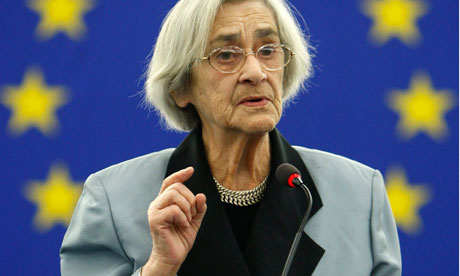 Yelena Bonner
Yelena Bonner
Returning to the comparison with Oppenheimer, this book being my only source, it is not clear to me if Sakharov had management responsibility akin to Oppenheimer’s. None are explicitly mentioned though Sakharov is occasionally referred to as ‘Director’ of this project or that and the word implies management to some degree.
The book was a hard slog. The implied thesis behind the title seems to come straight from Karl Popper that science and democracy unite in falsifiability. Neither assures perfection but each can falsify mistakes through rational argument and evidence. Ergo, the more rational and scientific Sakharov was, the more he had to reject (falsify) the Soviet system and make his way (intellectually) to democracy. Oh dear, does that mean the Soviet scientists who did not move this way must not have been rational and scientific after all, and likewise that the Western scientists who pined for authoritarian government, hello Ed Teller, were not either. Such consistencies do not worry the author.
Our author has it that one of Sakharov’s deepest concerns with the Soviet Union was the easy and irrational way in which scientific arguments and evidence put before the top leadership were cast aside. Stalin and Khrushchev having grown up among farmers rejected scientific biology on the strength of that background. Bergman implies this rejection of scientific, reason, is one of the core evils of the Soviet Union. Arrrrrrrgh! What would Bergman make of political leaders today in the West who reject climate science in one sentence or less? Evil?
Similarly, Bergman in contrasting Sakharov with that other even more famous dissident of the time Alexander Solzhenitsyn takes Sakharov’s side because Solzhenitsyn was too much a believer in the mystical soul of Russia for the scientific age of reason and democracy. Hmmmm. What would Bergman make of those Tea Party nut cases invoking God above to reject vaccines and fluoride because Moses did not have any. Evil?
In the same vein, Bergman speculates that Sakharov wanted the rule of law as he supposed it existed in the West. Well maybe but convince me. Quote that phrase ‘rule of law’ from something Sakharov said or wrote. [Silence.] The ‘rule of law,’ let’s ask David Hicks about that shall we? Montesquieu evolved a theory of government that inspired the writers of the Constitution of the United States to divide and separate powers; Montesquieu reasoned from the British example where he thought it existed but in fact it did not. Nonetheless, the illusion bred reality. (With difficulty I will refrain from mentioning that smirking Queensland journalist who made a name nationally by misunderstanding the separation of powers doctrine. Such are media reputations.)
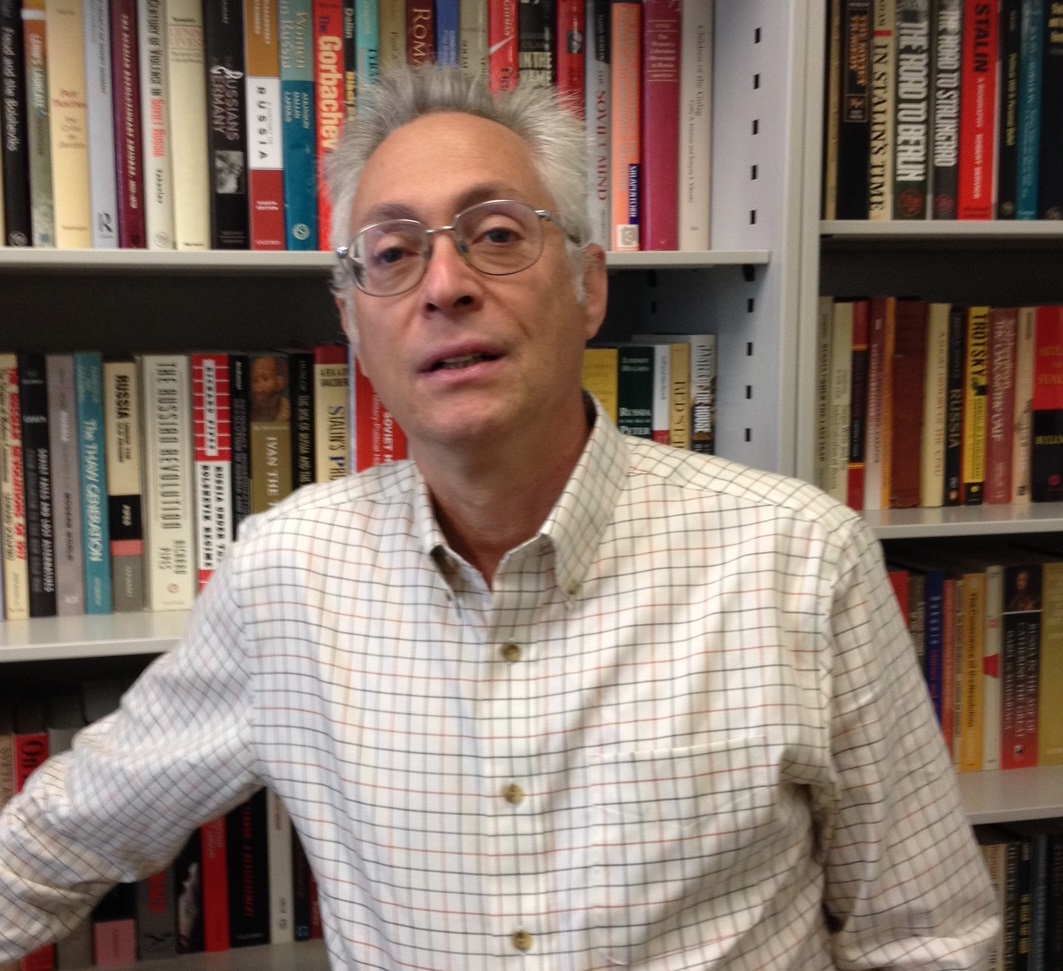 Jay Bergman
Jay Bergman
Even though published twenty (20) years after the fall of the Berlin Wall this book is a Cold War salvo. Every few pages another evil of the Soviet regime is described, denounced, and then placed in relation to Sakharov with some long bows.
There is virtually no science in the book after the early pages, and the science there is in inaccessible to this reader. The last chapter on Sakharov’s legacy which addresses exclusively his dissidence. Period.
I still do not know what made him a brilliant scientist.
Orhan Pamuk, ‘The White Castle” (1990)
Doing homework for the Turkey trot, ooops, tour, in October 2015. I read Pamuk’s ‘Istanbul: Memories of the city’ earlier, finding it well written but meandering, too much like life that.

This book is a fable, an Italian traveler is enslaved in Ottoman Istanbul in the 16th Century. His western knowledge, particularly anatomy, sets him apart, first as a doctor and later as an engineer.
The pasha who owns him gives him to Hoja, because the two men, the unnamed slave and the master (Hoja), look a great deal alike. Hoja is a scientist-engineer employed by the pasha and the slave becomes his assistant. They work on several projects, including fireworks. The pasha strives for recognition from the Sultan, Hoja strives for promotion. Much striving.
One theme is identity given the resemblance of the two men and their incessant exchange of information for some years, some of it personal. Another theme is the resistance of the Ottoman world to change, as represented by scientific knowledge both imported from the West in the slave but also as generated by Hoja.
The third, the governing theme, is the master-slave dialectic. The slave becomes like the master first but in time the master becomes like the slave. At the end it is not clear who is narrating the slave who has assumed the identity of the master, or the master who pines for the slave (his European knowledge) as his alter-ego. Are Turks Asians or Europeans?
Then there is the unreliable narrator beloved of post modern writers but not readers.
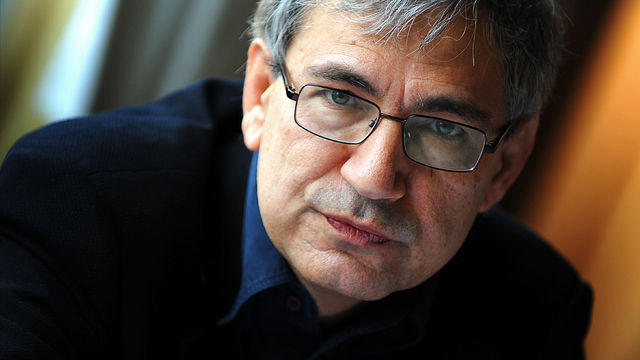 Orhan Pamuk, Nobel Prize winner in Literature.
Orhan Pamuk, Nobel Prize winner in Literature.
But I fear that it is not particularly interesting to read. It is well written but seems lifeless, as though the plan was drawn up on a white board and then executed in neat chunks. The author is aloof, detached from it all framing the story as the finding of a third party.
Puncture: A Dance through time and place.
A combined performance of Legs on the Wall, Vox, and the Sydney Philharmonia Choirs for the Sydney Festival 2015 at the Riverside Theatre in Parramatta. I went to a matinee to see the alto do her stuff. I class this entry as a Film Review for my convenience.
 The lobby card.
The lobby card.
What singing! What energy! What colour and movement? And some of it was in black-and-white, too. It had everything.
 The Riverside Theatre, the one in Parramatta, not Milwaukee or San Francisco.
The Riverside Theatre, the one in Parramatta, not Milwaukee or San Francisco.
It is presented as one continuous piece with breaks for applause. There were several distinct parts. The opening reminded me of ‘West Side Story,’ later there was a one-note ’Space Odyssey,’ a soprano ascendant, a Strauss waltz, lost souls in the haze à la Dante’s ‘Inferno,’ some aerial fish on harnesses, and — best for last — a superb, creative use of iPhone cameras which I thought was delightful, and apt with the app! All done in about an hour.
The black-and-white were shadows projected on the wall. Having recently seen the relevant episode of ‘Rectify’ I agreed, Plato was on to something. [You either get it or you don’t.]
Wait there is more! The audience entered through the tradesman’s door and snaked down a maze of hallways to sit on the stage with the performers. I had already instructed me to seek the high ground and I found out why later. In stagecraft-speak that is supposed to break down the barrier between audience and performer. Hmm. Reduce it yes, conceded.
This piece has been the Sydney Festival for 2015 for us. Kate has had numerous rehearsal with much get ready and wait along with seven (7) performances, sequins and all in the haze.
It was blisteringly hot day in the centre of Sydney, Parramatta being the geographical and historical centre of the greater Sydney metropolitan area.
 The red flag at the top edge centre left is the Sydney CBD with Parramatta in foreground.
The red flag at the top edge centre left is the Sydney CBD with Parramatta in foreground.
I took the train back to Newtown, glad of the air conditioning on board. Kate had to stay for the evening performance, returning much later ready for a large one.
‘Life Itself’ (2014) Recommended.
As this nerd’s tribute to another nerd, I left my desk this morning to ride Bus 352 to the Chauvel theatre in Paddington to see Roger Ebert in ‘Life Itself.’
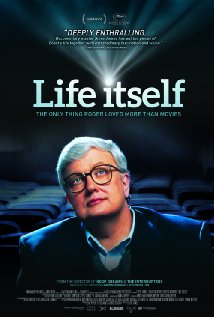
A movie is a machine for transmitting empathy by telling the stories of other people, of other times, and of other places … and there we find something of ourselves and we experience it in the silent company of hundreds of others. No, we are not alone. Call that an Ebertism. I am sure he said something like that but I could not track it down.
The movie chronicles Ebert from cradle to grave, the small town mid-western only child who made his way in the big wide world. At the University of Illinois he worked his way up to editor the ‘Illini Daily’ where he rose to the occasion in November 1963. (By the way, I loved seeing that two-storey printing presses, the rumble of which is heard streets away.)
The essential loneliness of the man is inescapable in his earlier years, here portrayed as his salad days, the life of the party with no home and no one to go home to, drinking all night and eating like a pig, and he poured himself into his typewriter.
That Ebert was awarded a Pulitzer Prize for his movie reviews is noted and mentioned a couple of times, but nothing is said about why he got it. A quotation from the citation would have been valuable. It was remarkable that a film reviewer would receive such an accolade. Still is.
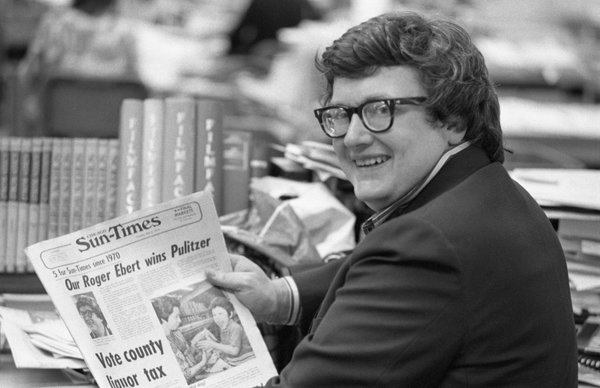
One of the major themes has to be the odd coupling with Gene Siskel. They were from different worlds, and found little in common. If they bickered on screen, they positively reviled one another off it. Though even some of that seemed forced yet it was amusing to watch the out-takes, boys being bad boys because it was expected of them.
Film literati never accepted Ebert and hated the influence he gained with audiences and indeed directors and studios. His most egregious failing was that he did not write in the inscrutable, closed, self-referential way beloved of Cultural Studies. I think of all those films made for other film directors lovingly reviewed in the ‘The Story of Film: an Odyssey’ (2011). (A documentary film reviewed elsewhere on the this blog.) Ebert cut through all of that.
Whenever I see a movie I like, I check the Ebert archive in the hope that he wrote about it, putting into words some of the things that occurred to me and, more importantly, putting into words things that did not occur to me at all.
This is the man who recognised Martin Scorsese’s genius in ‘I Call First’ (1967), who searched out and encouraged independent film makers like Errol Morris, reviewed documentaries as if they were feature film when other reviewers ignored documentaries, and made subtitled movies acceptable to an ever larger audience. Credit where credit it due.
By the way ‘I Call First’ was retitled ‘Who is that knocking at my door’ when it got a wide release thanks to Ebert’s push. His battles to review independent films with little or no theatrical release is more than enough to make the case that he expanded the realm, likewise, his thinly disguised efforts to review some obscure film three times to give it exposure. Siskel played a part in all of this, too, but is not given credit for it in these 120 minutes. No time, I guess. See my comment on length at the end.
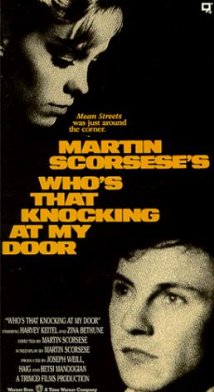
Among the many likeable moments in the documentary are these:
Martin Scorsese’s perplexed reaction, even years later, to a bad review from Ebert was delicious. Not only did Ebert start Scorsese’s career but he resurrected it once, but even so he did not like ‘The Color of Money’ and said so.
The continental tensions with the rulers of popular culture in Los Angeles and New York City who ignored those two guys living in a movie house in Chicago for years and years. (I always thought they lived there anyway.)
His abiding loyalty to the working class ‘Chicago Sun Times’ and its readership even under the baleful influence of Rupert Murdoch’s ownership was staunch. It gave him his start and he repaid that everyday.
Werner Herzog’s description, delivered in the thick overcoat of a German accent, of Ebert as a comrade wounded in action who soldiers on was charming, grim, and exact.
Richard Corliss of ‘Time’ magazine eating the words of some of his early attacks on Ebert’s approach to reviewing. Too down market for the young Corliss. An older and wiser Corliss sees a bigger picture now, or having made his career, Corliss perhaps now has no need any longer to attract attention by attacking an established figure.
The recitation of the last page of ‘The Great Gatsby,’ ‘Most of the shore places were now closed…[get it and read it for yourself].’ A dirge to be sure, but ‘Gatsby believed in the green light.’ So did Roger Ebert. Find and follow the green light….
Art mirrors life but it need not reproduce it, as Ebert said more than once. There was about 30 minutes too much of life in the film for this viewer, the grieving wife, the loving grandchildren, the lingering camera shot to wring every last drop of emotion from the take, enough already!
I enjoyed leaving my well beaten paths for a while today, but I won’t make a habit of it! I have footnotes to go and chapters to write before I play hookey again.
‘L’Âge des ténébres’ (2007)
A Walter MItty story set in contemporary Montréal. Jean-Marc lives a downward spiral in a world that is collapsing all around. To escape he daydreams, nightdreams, afternoon dreams his life away, enduring an impossible job, a loveless marriage, a daily trek to be demeaned at the office while being incapable of assisting any taxpayer who comes to him for assistance. It is a well worn franchise, this story but it is handled with vigour and imagination. If the whole does not compute, many of the parts are great fun, some of them instantly recognisable.
For instance, the committee meeting of ten to explain to Jean-Marc that ‘negro’ is a non-word in his first official disciplinary warning. The elaborate methods of the smokers to avoid the anti-smoking patrols. Yes, security guards with dogs on anti-smoking patrols. Then there is the singular Montréal touch, that Olympic stadium white elephant. Though no government in fifty (50) years has a found a use for that monument to the ego of Mayor Jean Drapeau, Denys Arcand has: government social services offices.

Why not, a billion tax dollars went into that monstrosity at the end of the metro. It is has been cited in every other Olympic bid as an example of what not to do.
Of course the functionaries have little time to deliver social services since they are constantly in meetings to hammer each other very politely with a host of conflicting and contradictory rules, to be motivated even if depressed and dispirited by Humour Quebec, to be trained in the latest trivial tweak to the meaningless rules, planning how to cut the next budget, and scheduling the next meetings. See, I said instantly recognisable.
His daydreams about revenge on his line manager and the supervisor….
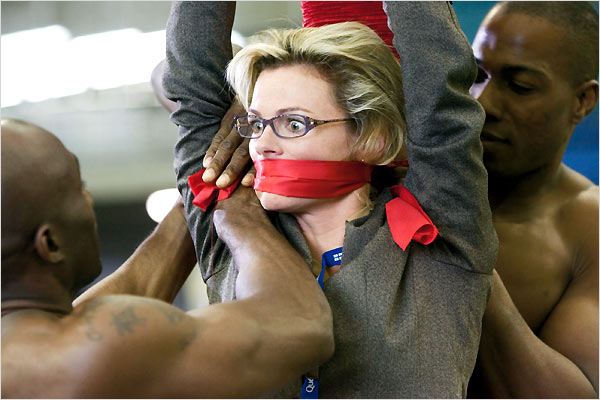 The prince’s minions at work.
The prince’s minions at work.
Well that prince of equatorial origin is famous for his cruelty. Seeing a Roman emperor dragging on a cigarette, that is worth the price of admission.
His imaginary girlfriend’s anger at being the dream girl for such a loser, ouch, that hurt! But she did not seem to mind his other fantasy women.
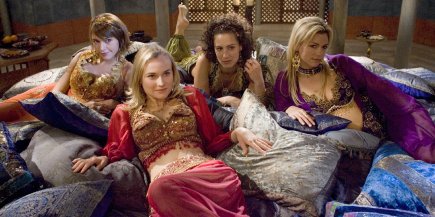 The harem.
The harem.
The high-powered wife is a caricature, to be sure, but then so is everything and everyone else. The news on the radio, television, and newspapers is one downer after another. Everyone wears surgical masks in public because of an unfathomable disease that the authorities cannot control. The commuter train, which breaks down everyday, is repaired by the driver with a sledge hammer. The metro is packed with unpleasant people. Criminals with guns are released on technicalities that no one understands. Gangs roam the streets at night. The sky will be falling soon. This is not a Montréal for tourists.
Perhaps thanks to a chance meeting with another fantasist, and more importantly the death of his mother, Jean-Marc is jarred out of his mind world. He leaves home just when his wife returns. I started to type ‘estranged’ wife but their relationship is not close enough to become estranged. He banishes his dream girl with the recriminations of a long married couple. By the way the earlier shower scene with the reference to American film classifications lets us all in on the joke.
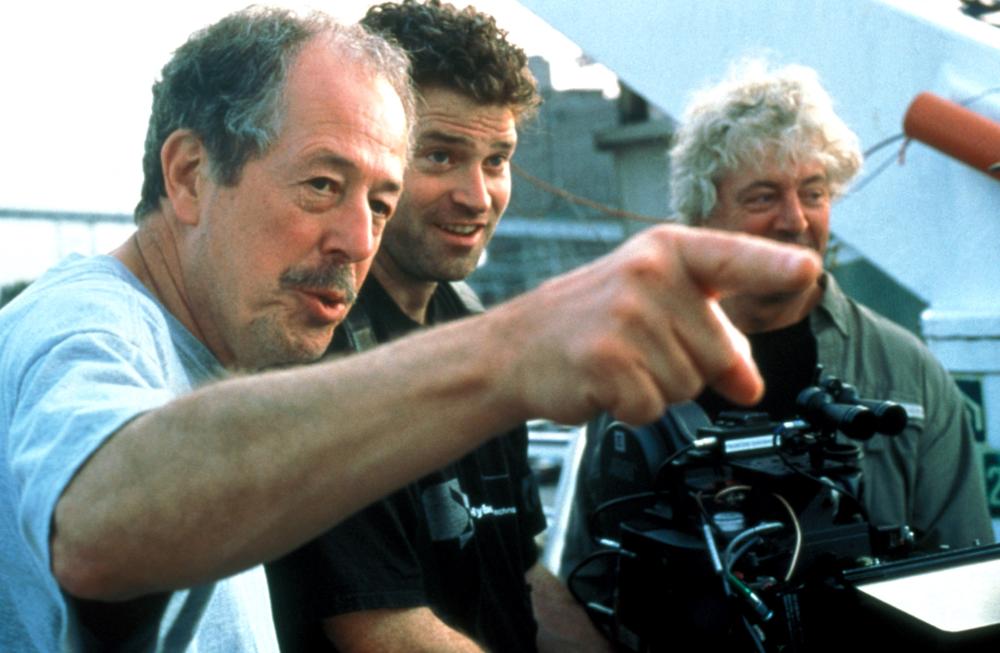 Denys Arcand gesturing. A great talent, this one with a string of thoughtful and memorable films including ‘Jesus of Montréal,’ ‘Decline of the American Empire,’ and ‘The Barbarian Invasion.’
Denys Arcand gesturing. A great talent, this one with a string of thoughtful and memorable films including ‘Jesus of Montréal,’ ‘Decline of the American Empire,’ and ‘The Barbarian Invasion.’
Recorded from SBS and watched later. The title ‘L’Âge des ténébres’ is literally the Dark Ages, but for reasons best know to themselves the SBS producers called it ‘Days of Darkness.’
‘The Imitation Game’ (2014) at the Dendy Newtown
Bletchley Park first was unknown, then a curiosity, a historical drama, and now a fantasyland.
Bletchley Park, now open to the public.
It remained secret for most of the Cold War, then a little information became available in the 1960s, then a lot more in the 1980s, and now the facts no longer constrain the story teller. ‘Enigma’ in 2001 was one take on it, a drama with a tortured performance from Dougray Scott and Kate Winslet playing against type. It was perplexing and rousing.
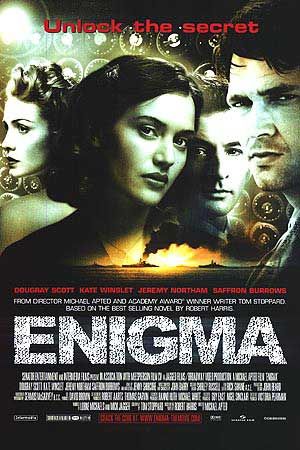
In 1968 Dirk Bogarde ran the show in ‘Sebastian’ with understated panache.
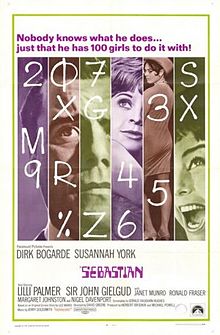
’The Bletchley Circle’ has also been on the small screen, which after a great start descended to the average, emphasising special effects over intellectual content.
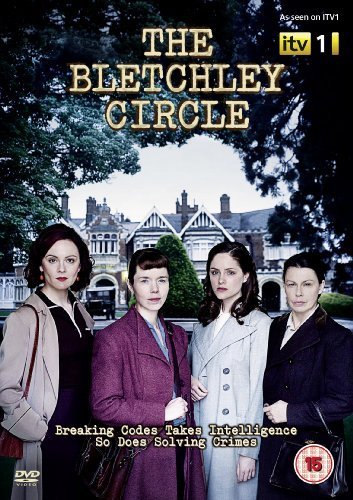
We dithered about going to ‘The Imitation Game.’ Seeing man’s inhumanity to man, well, we could see that on the television news any day. Huh? The publicity emphasised the abuse of Turing for his homosexuality; no doubt this was done to martyr him, but it put us off. For a while.
Bletchley Park, I had to see that again. Nerds winning the war! Near sighted, stoop shouldered, shuffling wallflowers with bad table manners, I could identify with them! Sorry Brad Pitt but you are not in my league.
The importance of codes and decoding has a long history to be sure. There is that Zimmerman telegram of 1917, a coded German message to Mexico that was intercepted and decoded and gave the United States a push into the war. More on the Zimmerman letter at the end. Read on.
To compare ‘Enigma’ to ‘The Imitation Game’, a few points standout. ‘Enigma’ showed Bletchley Park to be the gigantic factory it was, employing in 1944 about 12,000 people. The Bletchley Park’ of ‘The Imitation Game’ is confined to less than a dozen people with a few CGI backgrounds. In ‘The Imitation Game’ Commander Alastair Denniston is a foolish martinet, played to a ‘T’ by Charles Dance, but in fact he was the one who decided very early that code breaking in this war required mathematicians and engineers. In earlier years, decoding had been the province of linguists and translators. Not this time. Likewise, running crossword puzzle competitions to recruit personnel was his, not Turing’s, brainchild. Nor do I think the beard is right for 1942. None of the pictures I could find show him with a beard in the 1940s.
Colossus was indeed a digital computer but it was neither designed nor used by Turing but by others. Turing devised and built another device, but the film is ‘based on a true story’ so the slather is open.
Many reviewers have focused on Turing’s homosexuality, and it certainly was the man. For the one-eyed there is not enough emphasis on that, no doubt, but to this viewer it seemed partly anachronistic, i.e., the references were too explicit for the time when homosexuality was the love that did not (dare) speak its name. The very word itself in 1942 would have not always been understood. Having said that, there was plenty of emphasis on it, though Turing suffered also from autism, and code-breaker he might be, but he could not see double meanings in conversation, a fact that is very nicely presented in the scene in the pub. There was also paranoia in the mix.
There is no historical reason to believe that Turing made any decisions about the use of the material. Disclosure by using the intelligence, this was a command decision made at the very top. though Turing may have realised the implications of acting on the information but it hardly seems consistent with his complete self-absorption most of the time. Making a member of the inner circle, who apparently does nothing, a relative of a sailor on a convoy was a very midday soap opera touch. Every ship had brothers and sons on it, a good many wives, sisters, and daughters, too. ‘Enigma’ plays this straight and the result is all the more powerful when the senior naval officer implicitly orders his men to their deaths for the greater cause.
It seems very unlikely to me that a one page letter from Turing to Churchill would have uncorked a £100,000. Perhaps Leo Szilard, Churchill’s science advisor, interceded, but we will never know in ‘The Imitation Game’ where Turing is the singular Atlas on whose shoulders the world rests. On the same page the confrontation after the door is kicked in seems almost childish in its resolution where the messenger from the Home Office without word of dialogue has the authority to nod to a six month extension but mutely accepts a one month edict instead. Hello! It does not work anything like that.
Turing did write to Churchill at one point to ask for more clerical staff, and Churchill did reply immediately for ‘Action this day.’ Based on a true story they say. Hmm.
I found the chopping back and forth through time from 1928 to 1942 to 1955 confusing and distracting. The only reason the schooldays of 1928 were there in the end was to explain the name Christopher on the last contraption Turing built. It was unnecessary to the story.
Benedict Cumberbatch strives to save the day and nearly does. He does not need that backstory of 1928 to be confused, arrogant, inept, autistic, brilliant, frightened, determined, lost, secretive, brassy, paranoid, unpredictable, lonely in a crowd, and more. He did them all by turns and at times a couple at once, riveting.
Alan Turing
The female lead by comparison goes through the motions without ever quite inhabiting the part, made more difficult for being underwritten. She becomes nothing more than a plot device. Joan Clarke in fact became Deputy Head of Hut 8 which housed the first Colossus, but you’d never know it in ‘The Imitation Game.’ And she did not secure this position by patronage from Turing, to be clear. By the way she wore glasses, as did Kate Winslet in ‘Enigma.’ Hooray for Four Eyes!
The idea that the air is full of secrets is quite an idea and I wished the film makers had scrapped the CGI warfare, which was uniformly poorly done, for something creative. Would there not be a way to show those messages passing through the air like tracers and being netted at British listening stations. Now that would excite any viewer. Maybe something like this map of transponders on European air traffic.

There are several scenes of Turing running and he was a Olympic class distance runner, who failed in an Olympic try out because of an injury. One of his many personal eccentricities was to run to London for meetings, carrying a back pack with clothes. Another was to chain his perfectly ordinary tea mug to the radiator.
The imitation game is still a test for artificial intelligence pretty much as described in the police interview room where Turing breaks the Official Secrets Act he signed in 1939 to tell the plod all.
The Zimmerman telegram was decoded and acted upon in 1917 by a team that included Alastair Denniston. A feeble effort was made to hide its source, and the Germans continued to use the same code. More intelligence from broken codes was used, and the German continued to use it. Even when the pretence of hiding the sources was dropped, they continued to use it. Why? Because it was a German code and so it was the best. It was unbreakable, despite the evidence that by the middle of 1918 the Allies were reading every radio message. See Barbara Tuchman’s marvellous book ‘The Zimmerman Telegram’ (1985) for tale of his Teutonic arrogance and folly matched only by that of the United States.
‘La Boîte Noire’ (2005)
Another little gem from SBS Television, this one from France.
A la suite d’un accident de voiture, Arthur est plongé pendant quelques heures dans un coma. Durant sa phase d’éveil, dans un délire verbal, il exprime des phrases incohérentes qui trouvent leurs racines directement dans son inconscient. A son réveil, il est face à une curieuse énigme : Que faisait-il la nuit sur cette route, proche de Cherbourg?
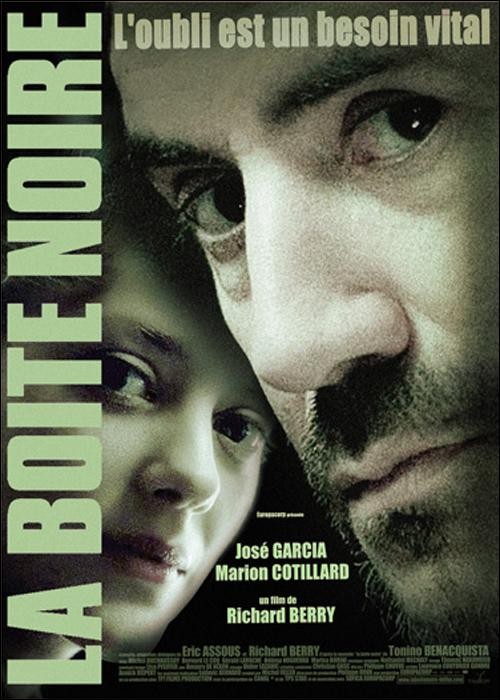
The title is perfect, once you get it, and as soon as it is said it clicks. The Black Box, c’est toi. Nice, very nice. The layers of reality and illusion are nicely done and the preoccupation with the brother begins to seem strange, and it is.
At first it seemed to be the story of an amnesiac who sets out to investigate himself, to recover his memory, as in a detective story, but it drifts away from that to science fiction or fantasy with the masked ninja. Even so, compelling viewing. It remains a study of unresolved guilt and obsession unleashed. Perhaps the larger purpose is to challenge the borders between reality and illusion but it does not succeed at that.
Juan Garcia’s many transformations from bland, sad, angry, confused, disoriented, lost, forgiving are worth the 90 minutes. He is in virtually every scene and carries the film. He is a superb actor and when we watched another SBS movie later I missed his depth, variation, and intensity compared to the callow actors in the next film who were so clearly going through the motions. Garcia believes what he is doing and makes the viewer believe it, too.
I recorded it because I saw that Richard Berry was the director and that it featured the ever versatile Juan Garcia.
Garcia I got to know when he played Adamsberg in a film based on one of Fred Vargas’s superb novels, altogether very fine that one,’Pars vite et reviens tard’ (2007) from ‘Have mercy on us all.’ That title in French is an idiom like ‘scoot and come back later’, and has nothing to do with the title of the book which is the same in both languages. Go figure. I cannot think of English equivalent to this idiom, though no doubt there is one I just cannot recall.
Richard Berry took his place in my mental pantheon with ‘C’est la vie’ (1990), another gem, directed by Diane Kurys, in which he played one of the parents, with only one scene but that was cut glass. I have kept my eye out for him ever since. He has a long list of credits including “Tais-Toi’ (2003).
The tag line on the poster above, ‘it is necessary to forget’ is perfect. It also reminds me of that old maxim that successful people have short memories. They forget their failures and mistakes and keep going. Selective memories is more accurate, but the point is not to dwell on mistakes, errors, and failures, and to keep going. When you quit, the others win.
I see that on the IMDB ‘La Boîte Noire’ scores a miserly 5.8/10. Well that confirms a conviction that most people do not recognise quality.
‘Double Entry’ (2012) by Jane Gleeson-White
The subtitle of this book is ‘How the Merchants of Venice created modern Finance.’
Yep, this is a book about the thrills, chills, and spills of accounting and accountants, the thrills of receipts, chills of ledgers, spills of debits, and that is just the beginning! Economics is the dismal science, and accounting is its dreary cousin.
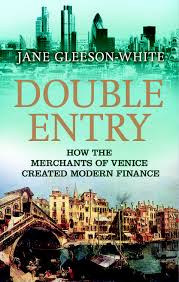
In 1986, according to my notes, I read Fernand Braudel’s ‘Capitalism and Material Life, 1400–1800’ in three magisterial (a code word for large and long) volumes. Braudel asserted in passing that the invention of double entry bookkeeping generated capitalism in Europe, first in Italy and then as Italian banks expanded northward to Amsterdam in Europe as a whole. At the time, I asked an accountant upstairs what double entry bookkeeping was, and he invited me to attend his twenty-seven lectures in Accounting 101 to find out. Some people always want to start way back at the beginning.
I tried again a few years later when I asked another accountant, who answered, in exactly 50 minutes, a lecture. That was simultaneously TMI + NEI or Too Much Information and Not Enough Information. None the wiser, my interest withered. But the ground was covered, as lecturers like to say.
Then one day I came across this title. The blurb promised that it would reveal all about double entry bookkeeping is. I took the bait! Who wouldn’t? Here is what I learned.
The Crusades created first mass tourism through Northern Italy which bought vastly increased demand for goods and services. Enterprises flourished to take advantage of the market opportunities these tourists offered, and so Italy has since remained. The Crusaders, those that came back, brought many things with them apart from saintly shin bones that they acquired from enterprising Arabs, they also brought back Arabic numbers.
Venice made sure it got a piece of the tourism action both ways, and the tourist boom it got put it on the map to stay since then.
Mathematics evolved thanks to those Arabic numbers, though it was resisted by the Catholic Church which saw evil in Arabic numbers. Multiplying and dividing was regarded as black magic. Sounds like an analysis by Fox News today. Ignorant and proud of it!
Though very Catholic, the authorities in Venice were pragmatic enough to tolerate Arabic numbers, despite papal fulminations. (Presumably some gold changed hands to buy the silence of the local prelates.) Indeed, Venetian authorities encouraged sound book-keeping, the more prosperous businesses are, the more taxes are due; the more accurate records are kept, the easier it is identify the taxes that are due and collect them. On this reasoning, the Venetians also invested in education! Hmm, has not quite caught on that one. Smarter, more well informed people make better use of their resources and opportunities to solve problems. This is still a new idea to some governments today, it seems.
Moreover, the Venetians licensed the publication of books about mathematics that spread the word through the Mediterranean world. Indeed because of its relative tolerance and stability it became a centre for book publishing as Amsterdam was to become later. Some of the earliest mathematics books published in Venice were applied mathematics aimed at book-keeping, says out author.
After all that background, what is double entry book-keeping? Good question, Mortimer! The essence is that each transaction is recorded in two entries, one called ‘credit’ and the other ‘debit.’ Wake up! ‘Credit’ and ‘debit’ are not used here in their ordinary meanings. (Those conscripted to use Spendvision will realise that there is nothing intuitive about accounts.)
Prior to double-entry book-keeping (hereinafter, DEBK) merchants, nobles, tradesmen, households did not keep accounts of any kind. I expect most of us still run the business of our daily lives like this.
Those that did keep records before DEBK, made notes on scraps of papers as reminders when something had to be followed up.
Most of us do a little book-keeping, say when keeping receipts for business expenses to submit for reimbursement from the firm, or to support business deductions on income tax. Either when submitted or at the end of the tax year we categorise and total these records. That is a primitive form of book-keeping. Corporate credit cards perform some of this record keeping for business expenses.
Before DEBK, the more careful merchants, especially those with larger volumes of transactions, began to write them down in a single list, e.g., of things bought and things sold. A month later it would be hard to find a particular transaction in that list, undifferentiated and without annotation. First came annotations which took the name ‘memorandum.’ These memos were sorted and entered again in a journal (a term still used in accounting), and finally in a ledger.
DEBK nests in a ledger with a T making two columns that are still to be seem in ledger books at Officeworks, Staples, or OfficeMax.
If I have $500 in my pocket then I have a debit against my capital of $500 and a credit in cash of $500, ergo two entries.
I know there is a lot more to it, but like all those accounting students I find it hard going.
The book goes on to claim that DEBK is the key to the whole of capitalism because someone said so. A lot of someone’s are cited, but…. Hold on! Slow down! Wait a minute!
The author shows that many people talked about and praised DEBK from, say, 1500 on, but not once, not ever does the author show that it improved business practice, was associated with greater productivity, led to more revenue for Venetian purses or anyone else’s. In short, there is nary a (factual) word about impact. It is all very Cultural Studies (a phrase I always shudder to hear, let alone type) to suppose that talk is reality and that reality is but talk. (Didn’t those Cultural Studiest ever mean a Lying Blackfoot? [You either get it or you don’t.]) Everyone praises Christianity, but it is seldom practiced with the fervour with which it is praised, even by those who praise it most, i.e., members of the Tea Party.
To a jaded reader (me) the best chapter then is the penultimate one on accounting scandals. Whew! What a list: Enron, Royal Bank of Scotland, World Com, HIH, One.Tel, ABC Learning, and that is just in the very recent past with an emphasis on some of the small potatoes of Australian examples. Of course when the potatoes are all one has, they are not small. Despite Australia’s sorry experience, it has more accountants per square dollar than either the United States or Kingdom (p. 153).
The author carefully alludes to the string of examples of accounting firms, which trade on their reputations, signing off on accounts of such corporations as those above a few days before the house of cards falls, and much to everyone’s surprise the piggy bank is empty, including the pension fund.
It does make a punter like me wonder what the point of it all is. (Yes, I thought of Foucault.) Have rules become so complex that a clever and determined villain can use them to hide the trail (in some cases for years)? Do more rules create more loop holes, black spots, grey areas, and trees to hide the forrest and just generally make it easier to play hide-and-seek?
For a couple of years I served on an Institute of Charted Accountants committee that enforced professional ethics on its members. The rigour of the proceedings of this committee, the take-no-prisoners attitude of its professional members (I was a lay member) was all very impressive, but all the cases (documented sometimes in hundreds of pages) was about the date of a membership re-newal to the Institute or something else on that level. Was the postage stamp correctly squared on the envelope, is what I silently thought sometimes. (Yes, it was that long ago that postage stamps were relevant.) Such tiny ants were destroyed with titanium tipped warheads! Ouch! Inevitably, the accountants involved were sole practitioners who were humbled before this pitiless tribunal. Meanwhile, the major accounting firms in the same building were signing off on the accounts of the likes as those above. Go figure.
In this world, the mud seldom sticks. The author describes some of the subsequent careers of many of the major players in the scandals above. At a corporate level the accounting firms that approved the accounts of such corporations change their logos and web sites, a few partners take the money and run, oops, retire, and the firms continue to dominate not only the market for accountants but also for consultants to government and more. One fears the same people who brought us the last corporate collapse are now happily advising governments on the next one. No mea culpas can be heard.
Like tools, rules can be used for good or ill to be sure. But independent audits are supposed to deter and detect some of the ill. Maybe they do, but that does not make the headlines.
Tidbits, there are a few. The CEO of the Royal Bank of Scotland CEO presided over the creative accounting that led to its near-dearth experience got a golden parachute of £16 million paid for by the ever generous British taxpayers (p. 197).
The high and mighty behemoth Arthur Andersen started in 1929 as a cleanskin firm which would ferret out cheats, and died in 2002 of the same poison. Well do I remember once getting told off by a very proud Andersenian about the irrelevance of ethics education in business degrees.
By the by, Enron started in Omaha where it trod the straight and narrow, but when it moved to Texas, well it crossed more than a state line, thus confirming some deeply held prejudices of mine.
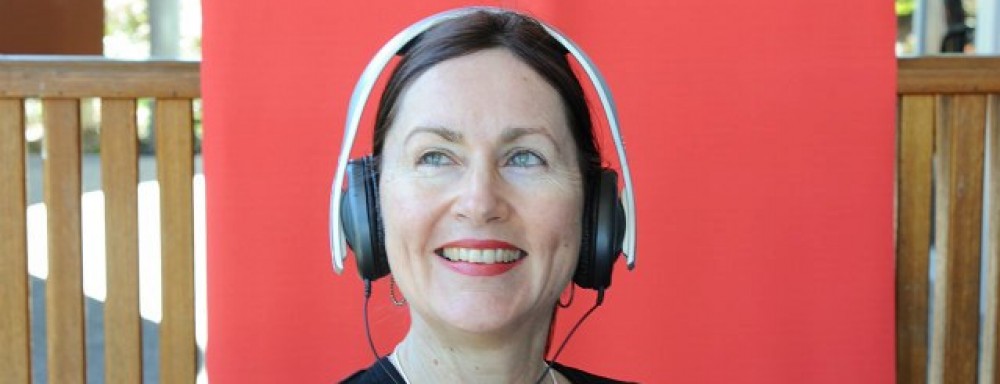 Jane Gleeson-White
Jane Gleeson-White
As to the book, there is too background and too much repetition and not enough focus or exposition of essence of double-entry to my mind. I still not sure what it is, so don’t ask.
‘Copyright’ (p. 78), no I do not think there was any intellectual property, but rather a license that permitted publication (i.e., passed by the Church censor and the Venetian censor). Copyright protecting the author’s intellectual property is centuries in the future.
A word is used that I cannot find in a dictionary: ie (p. 94). Even the spellchecker thinks it should be i.e. but not in this book.
There is a reference to Aristotle reviling interest on borrowed money but no text is cited (p. 96).
‘The Monogram Murders: The new Hercule Poirot Mystery’ (2014) by Sophie Hannah
First things first, Agatha Christie is the Nile River of murder mysteries. Her flood of stories has enriched the soil for others, imitators, rivals, critics, competitors, parodists, and those who try their own hand. Miss Marple, Tommy and Tuppence, and most of all, the one and the only Hercule Poirot.
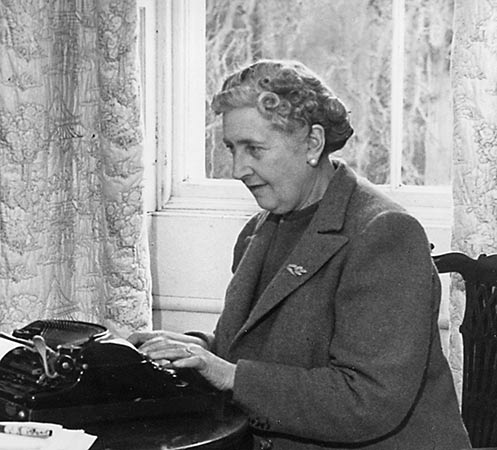 Agatha Christie, who said the secret to getting ahead is getting started. Amen!
Agatha Christie, who said the secret to getting ahead is getting started. Amen!
Poirot revivus! He died in ‘Curtin’ published in 1975 but written thirty (30) years earlier and cached.
The Christie family has guarded her heritage with care. No cheap knock-offs, no tee-shirts, or coffee mugs, no theme tours of St Mary Mead.
Only occasionally have the Christies permitted films based on the novels, and according to the scuttlebutt amongst us krimieologists, the family has not been pleased by some of the movies. Ergo the exacting standards the Christies asserted for the Davis Suchet television series, and we viewers are grateful for the meticulous attention to every last detail, which is just what Poirot himself would do. As he says in this tribute volume, no detail is too small to be important. Only when seen in the proper context can the importance of a detail be determined. Order and method, that is the Poirot way.
This title is a Christie-inheritors approved work that is set in the London of 1928. There is neither war nor depression, yet. Money flow freely.
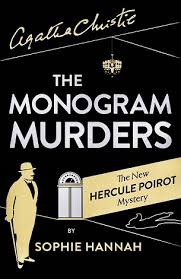
This Poirot is certainly Poirot. He is meticulous, scrupulous, fastidious, observant, perspecatious, easily irked and rather irksome himself. The little mustachios seem to twitch at times. The grey cells are evoked. But more important is the inner man who is compassionate and who detests the evil we do to each other without quite detesting the evildoer, or at least not in all cases.
Each character is well etched and distinguished, though I missed Captain Hastings, here replaced by a fledging police officer name Catchpool. Fee in the coffee shop is a winner and I am sure most readers want to hear more from her. Even Poirot is moved to remark on both her powers of observation and grasp of context, if lacking his unrivalled mastery, as he avers.
There is much to like in the book. If I have to make a criticism I would say that I found the repetitive dialogue as each character tells the story, and some of them tell it twice, and Poirot re-tells it again and again, tedious. We need more movement and activity. The author seems, however, to prefer talk, talk, talk, and more talk. All too much like a David Mamet play where the characters talk each other to distraction and the audience to sleep.
The plot, of course, is convoluted but that is to be expected, though why anyone would try to outsmart Hercule defies belief. Does not everyone know by now that he is world’s greatest detective and is never ever wrong! He certainly does his part to spread the word. However, the plot did not quite deliver the goods. There was a lot more trip than arrival, despite the many repetitions. Perhaps that is a quibble. But the monogram seems to have been there just to confuse things at the beginning, and some of Poirot’s revelations would have been trumped by police post-mortems if the wet-behind-the-ears Catchpool had followed procedure as per many other Agatha Christie stories.
Blue herrings there were a few, and some were never resolved on my reading. Rafal and that laundry cart in the front lobby is made much of when it occurs and referred to again at least once as a lead, and then never mentioned again though Rafal reappears. What did I miss? The hotel manager is such a larger than life character for the first half of the book and then all but disappears. When a character is given so much attention, the reader concludes that the character figures in the plot and is not just wallpaper.
There is an accompanying web site with some mini-videos of the books characters and episodes. Although the ones I watched did not jibe with the novel, so I stopped.
Overall, it is very good to see that Hercule Poirot is back among the crimefighters. Thanks to all involved in the resuscitation.
 Sophie Hannah
Sophie Hannah
Sophie Hannah has a long list of titles and I will certainly make a note to try one of them.
